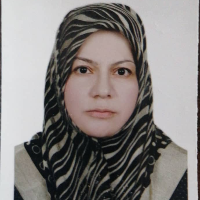Reading the translation of Surah Baqarah and Al-Imran (based on Eiser's aesthetic theory)
Author(s):
Article Type:
Research/Original Article (دارای رتبه معتبر)
Abstract:
Receiving theory is one of the contemporary critical approaches that has sub-branches; One of these branches is the aesthetic theory of Wolfgang Iser. Given that the basis of this theory is the reader's perception of the text and looks at the translator as a reader, so it seeks to find out how and by what methods the translator as a reader bridges the gaps and gaps of a text Fills the basis of your receipt. The present study uses the descriptive-analytical method of critical type and in the light of Wolfgang Iser theory, selected the divine translations of Ghomshei, Makarem Shirazi and Meshkini from Surah Al-Baqarah and Al-Imran as a literary text and after examining the gaps in the original text The two suras examine how it is reflected in the Persian translation Has set. Analyzes show that the virtual part of the language (metaphor, irony, authorized messenger, simile) is the most obscure part of the surahs, and among these, metaphor has the largest volume of linguistic gap. Translators have used two methods of removing and highlighting to fill these empty spaces, among which, Elahi Ghomshei has used the highlighting method to read the empty spaces more than others by freely translating these two noble suras.
Keywords:
Language:
Persian
Published:
Islamic Studies and Quranic Research in the Contemporary World, Volume:2 Issue: 2, 2023
Pages:
56 to 74
https://magiran.com/p2737741
مقالات دیگری از این نویسنده (گان)
-
The function of narrative techniques in the novel "Bread on the Table of the uncle Milad" by Mohammad Al-Naas
, Salman Azmoon Ali Abad *
Journal of The Journal of New Critical Arabic Literature, -
The phenomenon of linguistic substitution in the messages of Imam Ali bin Abi Talib "Semantic linguistic study in the Case of letters 1-15"
Ali Aswadi, Soudabeh Mozzafari, صغری فلاحتی, Abdullah Hosseini, Saeid Savari *
Arabic Literature Bulletin,



